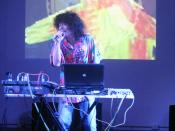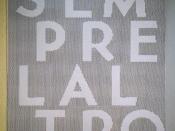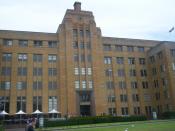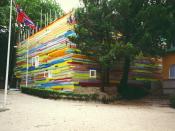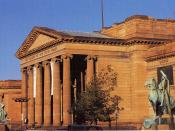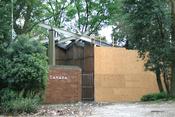This years Biennale is definitely one to remember with many attractive and interesting artworks that have come to Sydney from all over the world. With many types of mediums be exhibited such as, painting, drawing, sculpture, installation, fabric and stitching, photography, video, film, performance, voice and sound. These artworks are being shown at some of Sydney's most famous art venues such as the Museum of Contemporary Art and The Art Gallery of New South Wales.
The Biennale originally started in Venice, Italy and began to spread across the world. It was held every two years, and still is today. It is one of the most prestigious contemporary Art exhibitions.
Since 1973 the Biennale of Sydney exhibitions have presented the work of more than 1200 artists from some sixty countries. From the beginning, the Biennale of Sydney has created many opportunities for growing artists. This outreach program has involved hundreds of educational and cultural institutions and as a result, has invigorated artists, students and educators alike.
This year's Biennale has chosen the concept of "Zones of Contact" The concept "Zones of Contact" forms the framework and organising principle of the 2006 Biennale of Sydney. "Zones of Contact" is about the spaces in which people live in and move between, the spatial dimensions of cities, settlements, territories, the land and home. The works refer to the earthly scope of those spaces, the body, everyday life, places in which people come upon one another and other cultures.
There was one artwork that struck me that was on display the Museum of Contemporary Art, Circular Quay. It was an instillation called Mobile Home with furniture, household objects, suitcases, galvanised steel barriers, three electric motors and a pulley system and it was by Mona Hatoum, a Beirut-born Palestinian. Hatoum has lived in London since 1975, this year she was stranded there by civil war in Lebanon. Hatoum has experienced cultural dislocation all throughout her life. She studied for several years at the Byam School of Art before enrolling in the Slade School which she left in 1981. Throughout her life, Hatoum has worked with performance art, installations and sculptures.
Revisiting the theme of house and home, Mobile Home engages the viewer in a distinctly gentler manner. Composed of two metal barricades, the spaces between the barriers become an arena for a performance, staged by found objects that show not only domestic life but travel. In rows, lined up neatly are items including worn suitcases, a table and chair, colourful bedroll and many toys. Wires strung above the "traffic" between the tops of the barriers become clothes lines with laundry hung up on them.
As we see the piece closer, we come to realise that the laundry and other objects are slowly moving; inching to one barrier, and then back to the other. This subtle movement induces a sense of destabilisation. The title of the piece ironically is shown in the piece itself.
I think that the Biennale was wonderful to go and see. Each artwork depicted something that was important, with many of the artworks focusing on political and social issues of today. Mobile Home was certainly well thought out and I felt that the artwork really displayed what the artist was trying to say.
Overall the 2006 Biennale was full of diversity and assortment. With many different types of mediums and styles incorporated. I think the Biennale is an extremely successful exhibition, and I thoroughly recommend that you should go and see it!
